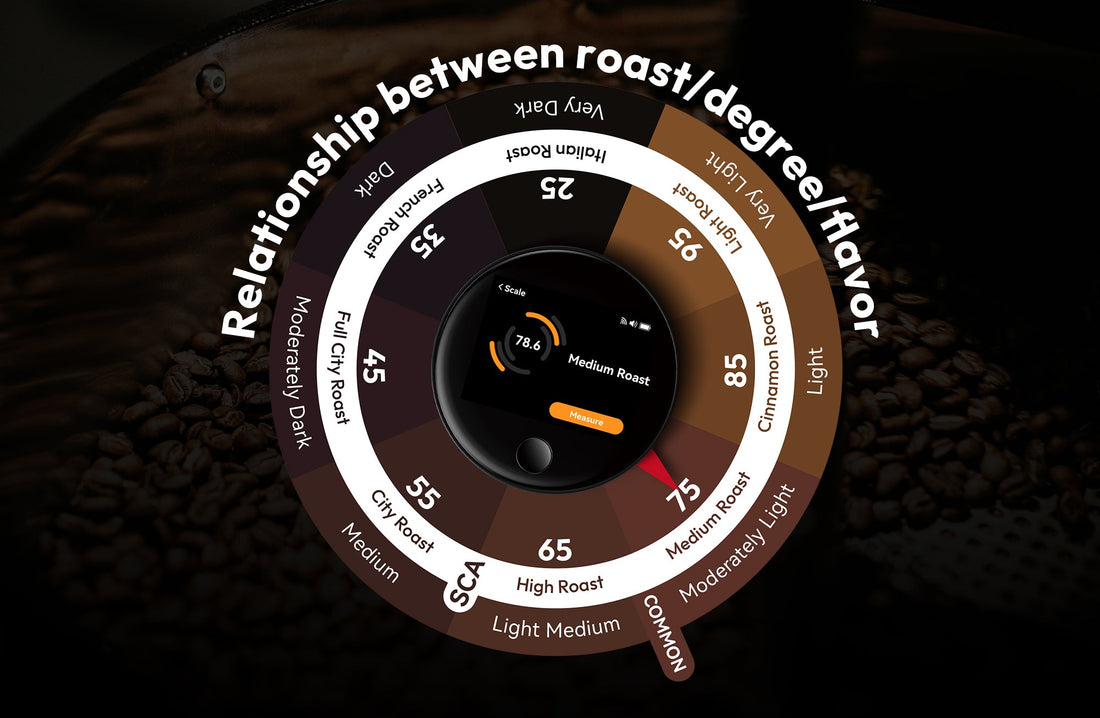RoastSee C1: Enhancing Roast Level and Coffee Flavor

Introduction: In recent coffee competitions, one term frequently heard is "color value." As a key standard for defining and judging coffee roast level, color value measurement plays an essential role in quality control during roasting. By checking the Agtron color value of the beans and grounds before brewing, roasters can assess the degree of roast development and indirectly gauge the flavor coverage of the beans. In this article, we explore the relationship between color value and coffee roasting.
1. What is Coffee Color Value?
Coffee color value refers to the data obtained by measuring the absorption and reflection of light by coffee beans and grounds using a near-infrared spectrophotometer. This method is used to determine roast level, providing an effective means for coffee roasting quality control. The higher the roasting temperature and time, the lower the color value, indicating a darker roast. Color value not only helps define the roast level but also assists in identifying roasting defects. Using LeBrew RoastSee C1, you can quickly and accurately measure the Agtron value, ensuring consistent roasting and better flavor consistency.

2. How Does the Roasting Process Affect Coffee Color Value?
During the roasting process, coffee beans undergo stages such as dehydration, yellowing, the Maillard reaction, first crack, and development. The speed of the roasting process, development time, and temperature all influence the color value. Faster roasting leads to higher bean expansion, and thus a larger difference between the surface color value and ground color value, known as the RD (Roast Development) value. LeBrew RoastSee C1 helps track these changes accurately, allowing for more precise roasting adjustments.

3. Why Does a Faster Roasting Pace Lead to a Higher RD Value?
The speed of roasting directly affects the expansion rate of coffee beans. With faster roasting, beans absorb more heat per unit of time. This results in greater heat penetration, expanding the internal structure and affecting the caramelization and Maillard reaction on the bean surface. These reactions generate more melanoidins, increasing the RD value. By measuring color values with LeBrew RoastSee C1, roasters can fine-tune the roasting process for desired flavor outcomes.

4. How Does Coffee Color Value Impact Flavor?
As color value decreases, the roast level deepens, and the coffee flavor shifts from unripe fruits to mature fruit flavors and sweetness. In deeper roasts, the coffee takes on notes of nuts, cocoa, and caramel. From a chemical perspective, deeper roasting increases melanoidins and Maillard reaction products, which reduce near-infrared reflectance and lower color values.
In faster roasting, the RD value increases, resulting in a larger contrast between surface and ground color values. This can lead to a broader flavor profile with better layers and more intense aromas. For example, fast-roasted beans with high RD values may exhibit both caramel and fruity notes, thanks to a wider variety of flavor compounds produced during the roasting process.

LeBrew RoastSee C1 is an ideal tool for measuring Agtron color values, allowing roasters to adjust their roasting rhythm and level, ensuring more consistent, flavorful, and controlled coffee roasting.



